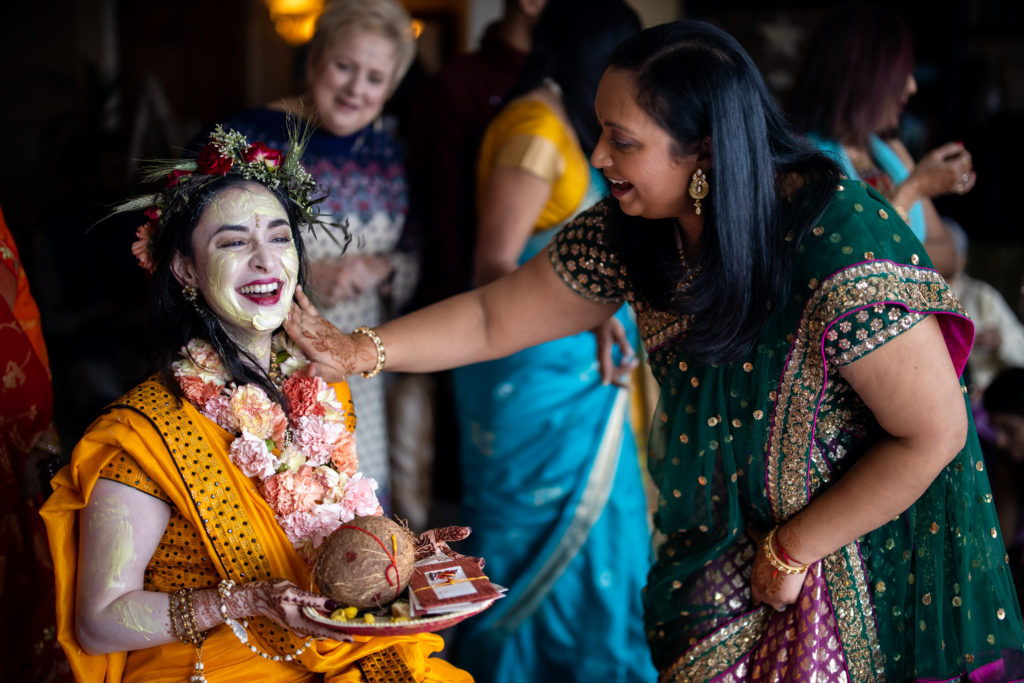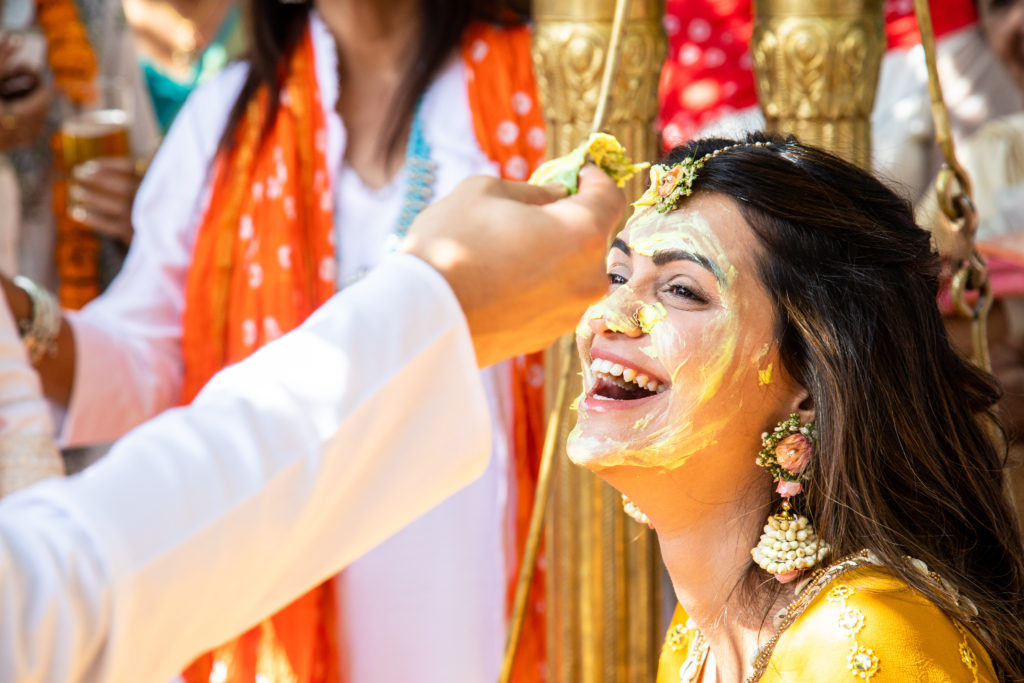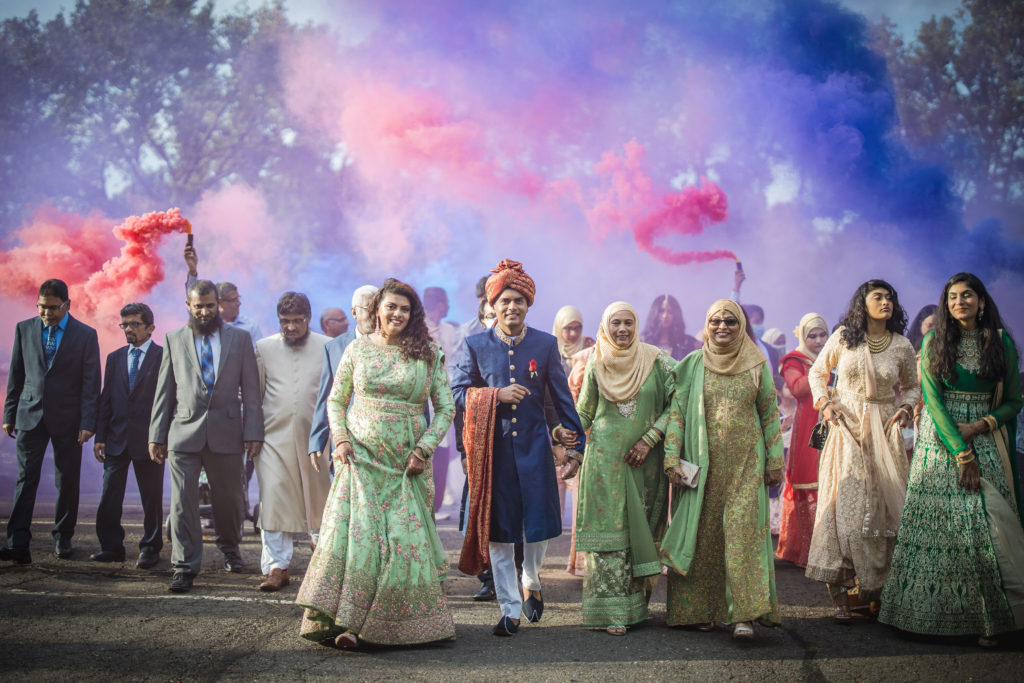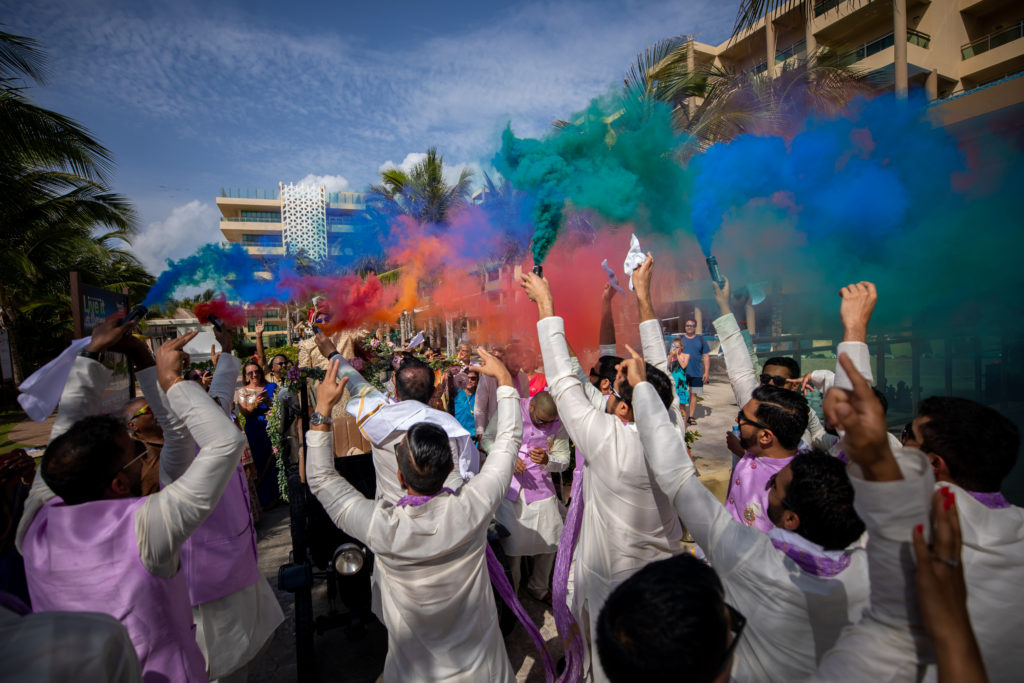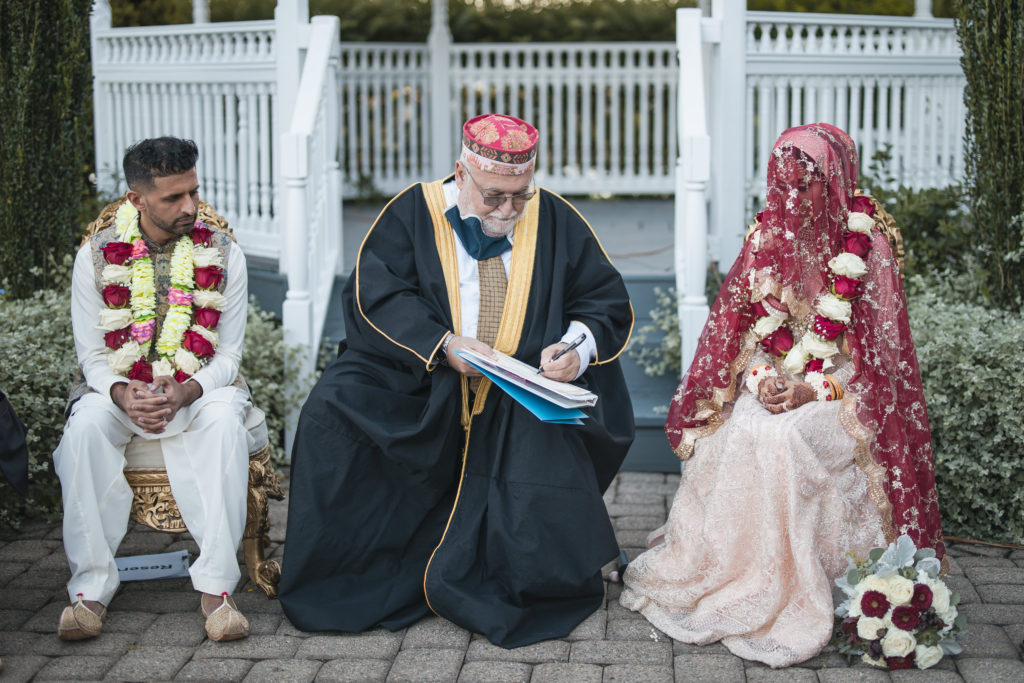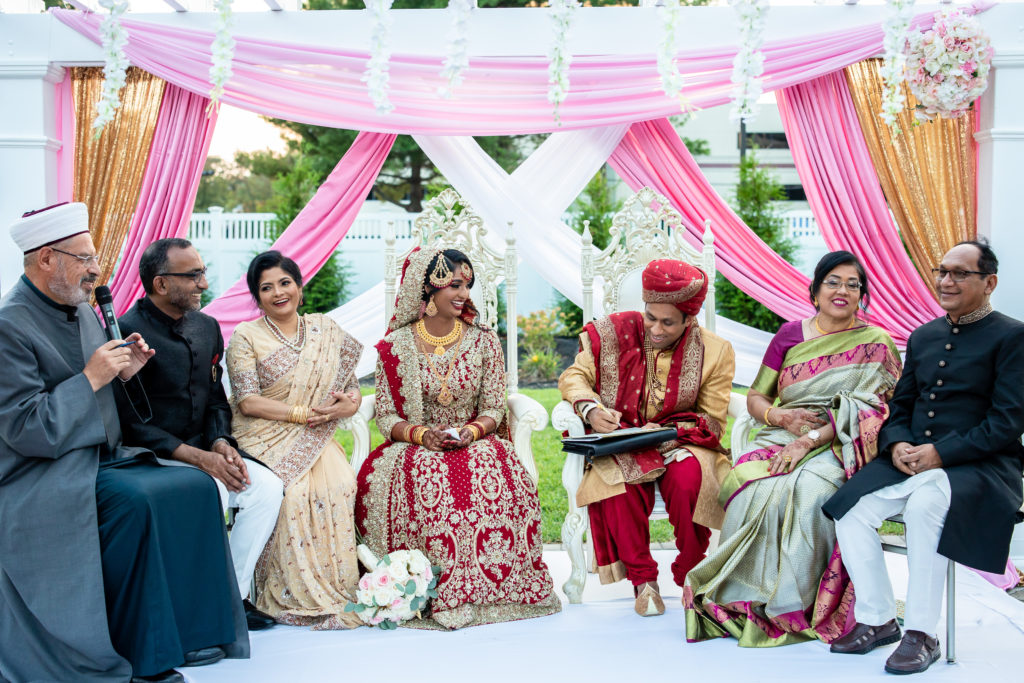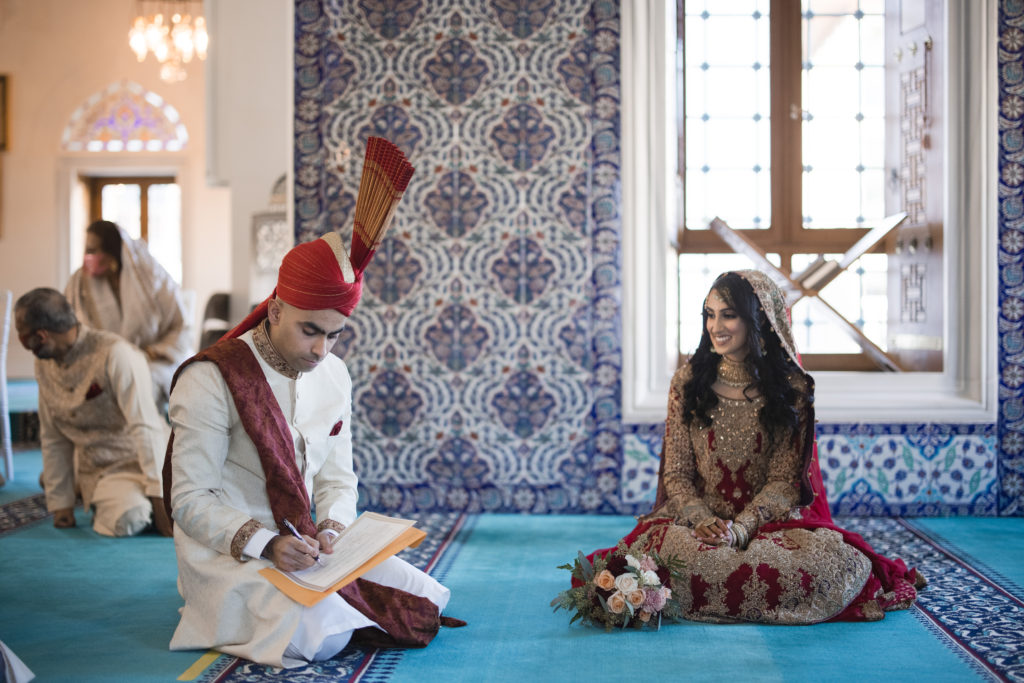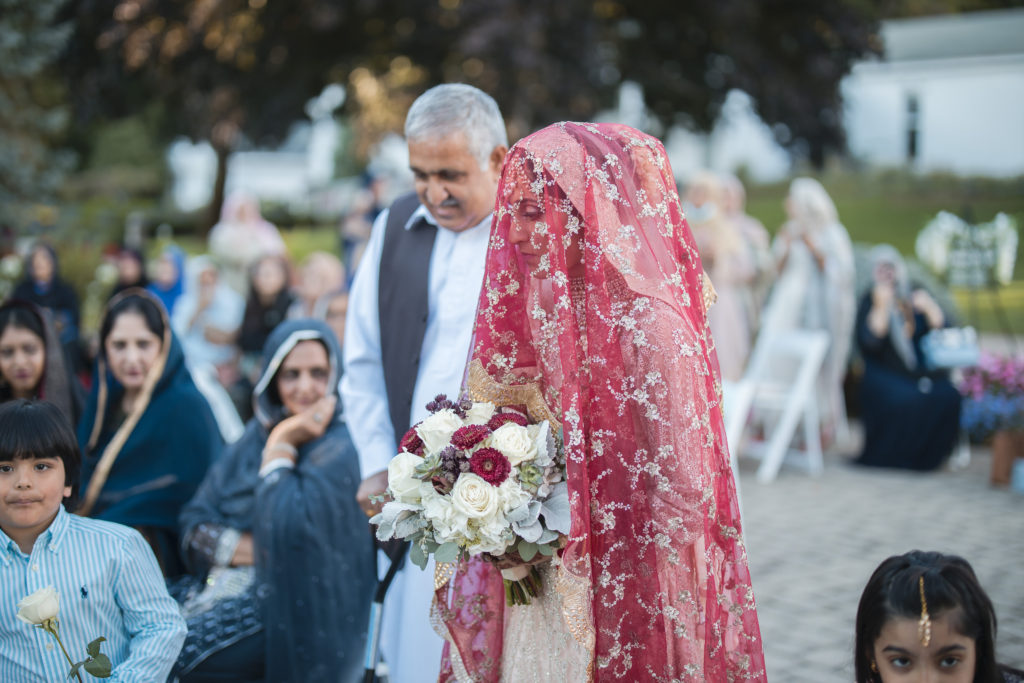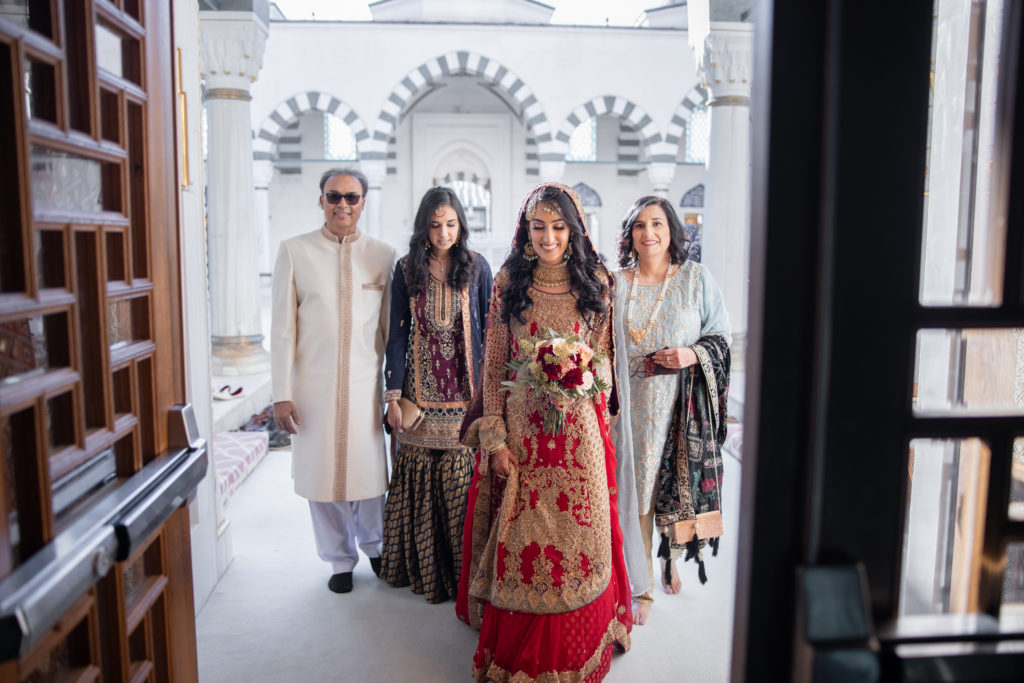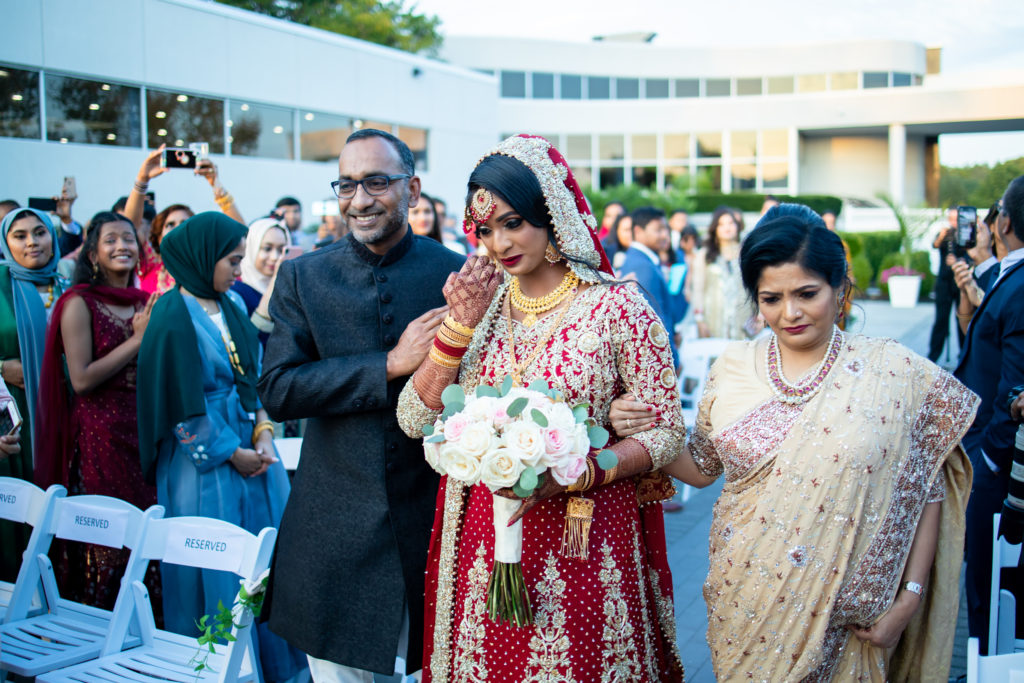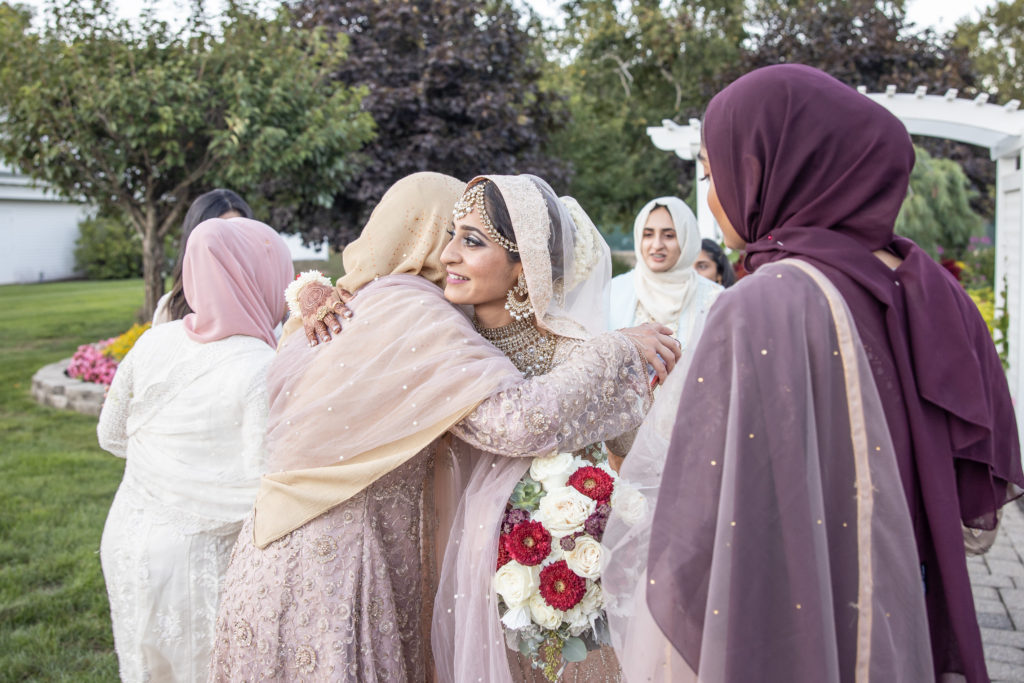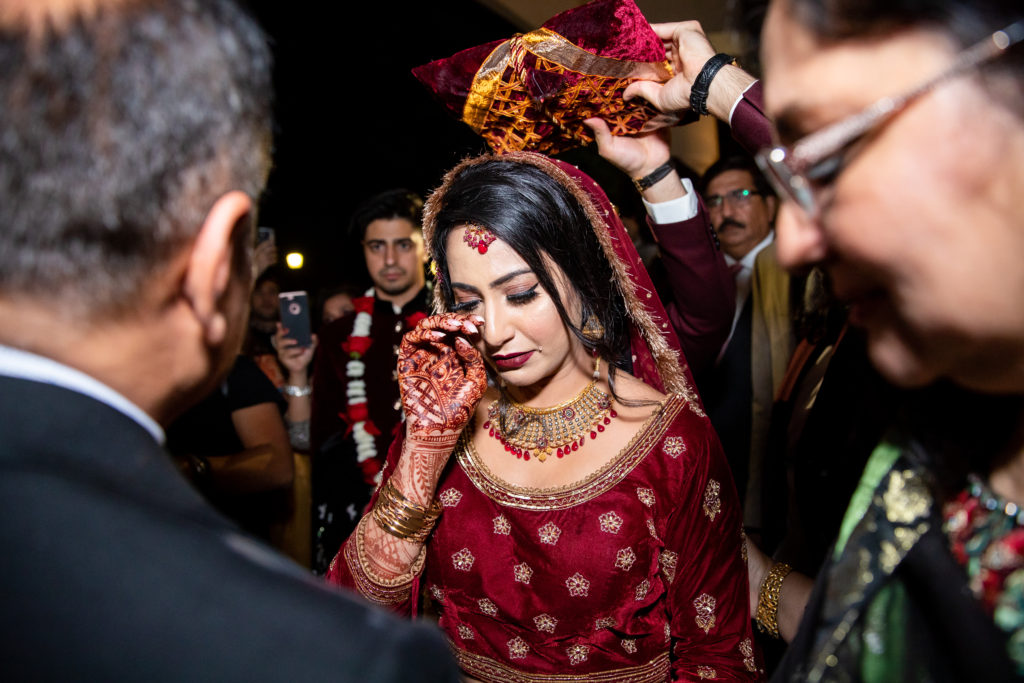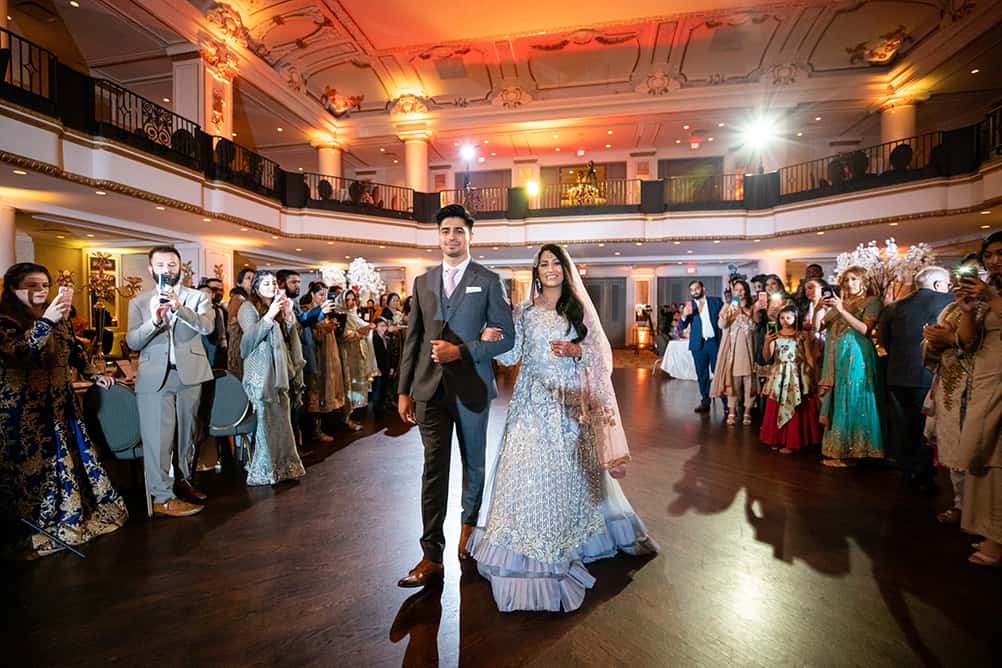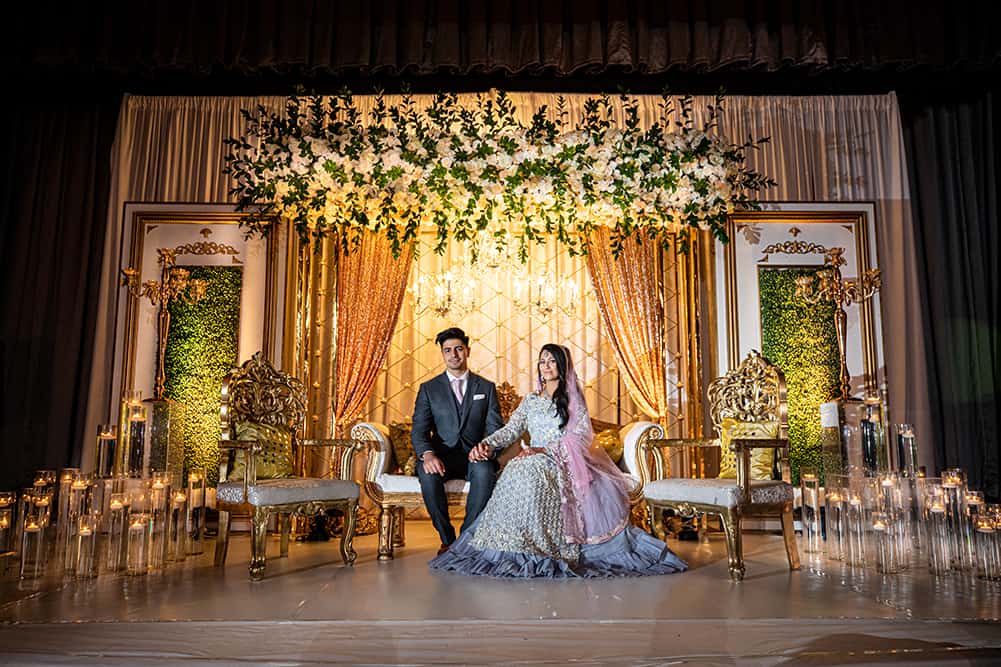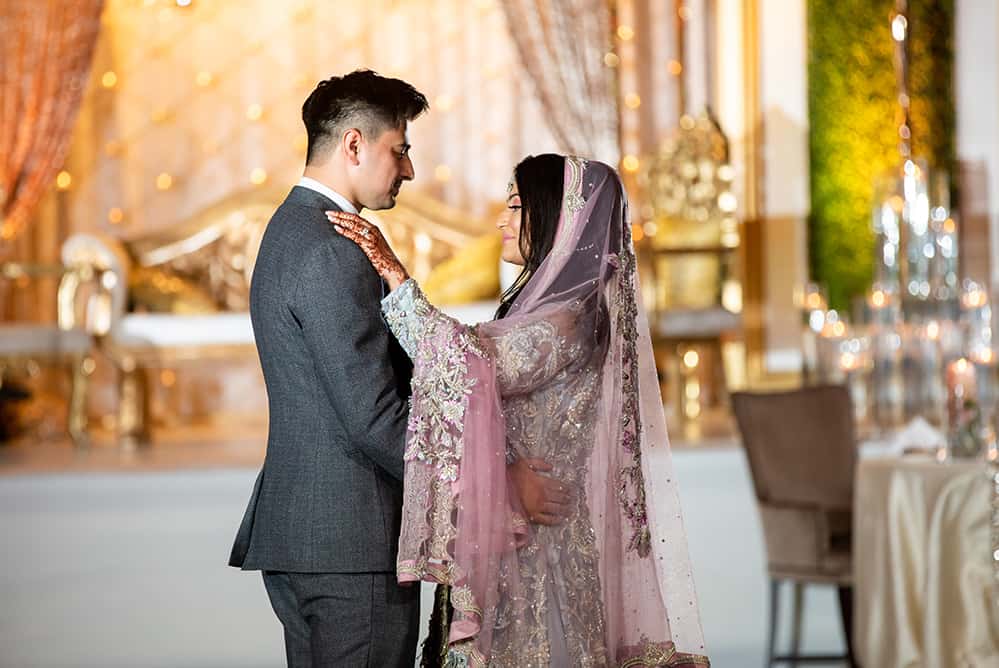Everything You Need to Know About Muslim Wedding Traditions
Every religion celebrates the occasion of weddings beautifully. Muslim wedding traditions are no different.
Islam is a religion that encourages marital ceremonies and the coming together of two people, making marriage one of the greatest good deeds a Muslim can perform.
With Islam being a religion followed by more than a billion people globally, every country has its own unique traditions and rituals. However, there are a few common traditions that you will find in every Muslim wedding.
As a photographer, it is important to familiarize yourself with these rituals and traditions to ensure you don’t miss any significant moments. Hence why we have created a comprehensive guide to all the ceremonies that typically occur in a Muslim wedding.
Continue reading as we explore the timeless and heartfelt Muslim wedding traditions.
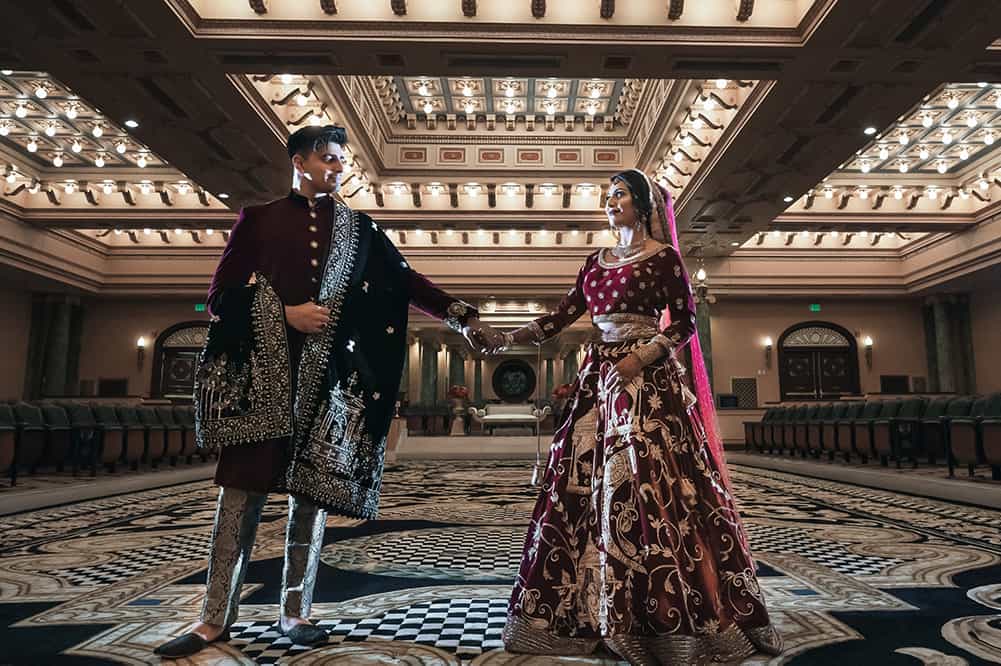
By P.Taufiq Photography
An Overview About Muslim Weddings
When it comes to a Muslim wedding, you should expect a clear distinction from other religions. Muslim wedding traditions usually have three to four core events. However, you may notice some extra events depending on the country’s culture.
For example, in South Asian weddings, the festivities last up to 2 weeks, each day filled marking an important milestone. It is extended by local traditions and culture. On the other hand, Arab weddings have fewer pre-wedding events, focusing more on the religious aspects.
The main “Nikkah” ceremony takes less than an hour with an Imam (religious leader) leading the event.
Depending on your relationship with the family, you may receive an invitation for one event or all of them. However, it is important to note that each event has its own distinct style and dress code that is expected to be followed.
What Happens In A Muslim Wedding?
A Muslim wedding is a deeply meaningful celebration, marked by a series of significant ceremonies and traditions that reflect Islamic values. Here’s an overview of what typically happens in a Muslim wedding:
Initial Meeting
It is a general tradition that the groom’s family would propose and formally ask the bride’s family for her hand in marriage. They offer gifts and sweets, and for things to meet a favorable end for the groom and his family.
Moreover, this is a chance for the bride and groom to discuss any important matters before finalizing the proposal (rishta in Urdu or Khitbah in Arabic). The bride’s family must give their full acceptance to their daughter’s union.
Engagement Party
Like most engagement parties, the entire purpose of this event is to celebrate the engagement of the soon-to-be bride and groom. An engagement party, also known as the “Milkah” in Arab culture, is not an official part of Muslim wedding traditions. But it is commonly observed in cultures worldwide.
The difference with Muslim engagement parties is the formalities. The groom would present the ring and formally ask for her hand in marriage. What would follow is the discussion of matters concerning the wedding, such as the dates of all the pre and post-wedding events.
The size of the event can vary according to the wishes of the family. Most cultures prefer to keep it low-key by inviting only immediate family members. Nonetheless, there are families that make it a grand celebration, sharing it with a larger circle of loved ones. They usually also opt for engagement photoshoots to capture the occasion.
Mayoon Ceremony
Traditionally, the Mayoom ceremony of a Muslim wedding is held separately, with both families celebrating in their respective homes. However, senior and elder members of each family may visit the other to offer their blessings to the groom and the bride.
The groom’s mother will apply turmeric on the bride’s skin because they believe that it will significantly give the bride a healthy glow before the big day. This event is usually exclusive or made private to only female members of the family.
Mehendi Ceremony
The Mehendi ceremony is a fun and colorful event that happens before a Muslim wedding, especially in South Asia. During the event, a henna dye is used to draw beautiful patterns on the bride’s hands and feet.
The bride often sits comfortably while this happens, and her friends and family gather around to enjoy the event. The ceremony isn’t just about applying henna. It’s also a lively celebration with music and dancing. Traditional songs are played, and guests often join in the fun, dancing and singing together.
Baraat
In Muslim weddings, especially in South Asian countries, Baraat is the most important day for the festivities.
Baraat is a wedding ceremony for the groom and their family. The groom visits the official wedding venue along with family and relatives. The process of getting ready, traveling to the venue, and reception is a part of the Baraat ceremony.
According to the tradition, the groom usually travels in a well-decorated vehicle and leads the rest of the vehicles. When the Baraat reaches the venue, the bride’s family and relatives welcome them by showering flowers on them.
1. Nikkah
The Nikkah is essentially the “I Do” ceremony in Muslim wedding traditions.
This is usually done in a private room with the Imam, the bride, the groom, and witnesses for both sides. The Imam discusses and imparts all the contents in their marriage contract. This is to ensure that the couple is aware of their responsibilities in marriage.
According to Muslim wedding traditions, the couple is then asked three times to confirm their willingness to enter into the marriage. This repeated questioning serves to ensure that both parties are making the decision freely and with full consent. It is a way to confirm their commitment and understanding of the marriage contract.
After the couple agrees and confirms their consent, they proceed to sign the marriage papers. This officially completes the Nikah ceremony.
2. Bridal Entrance
After the Nikkah the bride enters the wedding hall. She makes an entrance with her veil on, usually accompanied by our family members. This is necessary for them to do the ritual of Muh Dikhai “show your face”. It is a ritual in which the groom will introduce his newlywed wife to his family.
3. D’ua Prayers
These are wishful prayers to bless the newlywed to have a happy and long marriage. This ritual is led by the Imam. Everyone gives their undivided attention and utmost respect to Allah, they ask for the couple’s happiness, and above all health. These prayers are believed to strengthen their faith as they thread a new life together with Allah’s guidance.
4. Wedding Banquet
In a Muslim wedding, the banquet is when the families gather to celebrate, mingle, and have a traditional meal together. For some, especially traditional families they would play religious hymns for the entire festivity.
5. Rukhsati
Marking the final moments of the Muslim wedding traditions, the newlyweds say their goodbyes to their guests. This is a very ceremonious moment for her parents as this signifies her departure from them to build a family of her own.
Walima
The Walima is a post-wedding reception hosted by the groom’s family. Moreover, it is a key aspect of Muslim wedding traditions. It is an Islamic tradition that celebrates the completion of the marriage and serves as a public announcement of the marriage.
The term “Walima” is derived from an Arabic word meaning “to invite.” Hence, it is meant to honor the marriage and share the joy with family, friends, and the community.
Keep Your Muslim Wedding Memories Safe Forever!
Muslim wedding traditions celebrate the religious milestone through a series of meaningful rituals. Each event of a Muslim wedding marks the beginning of the couple’s journey and brings the families closer together.
At P.Taufiq Photography, we specialize in cinematic wedding photography and videography with experience in Muslim wedding traditions. Our goal is to ensure that every detail of your special day is beautifully preserved.
Let us help you tell your unique love story through stunning, heartfelt imagery. Contact us today to book your wedding photography session and make sure every precious moment of your Muslim wedding is remembered forever.
